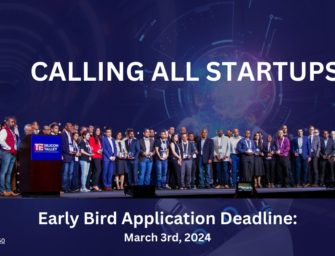The CEO Generator: McKinsey & Company
McKinsey has played a significant role in business for almost a century, not least in its role as a generator of top-tier corporate executives.
McKinsey: “the most efficient generator of top-tier corporate executives the world has ever known”
In his book The Firm: The Story of McKinsey and Its Secret Influence on American Business, Duff McDonald writes: “A few years ago, more than 70 past and present CEOs of Fortune 500 companies were McKinsey alumni, and in 2011 more than 150 McKinsey alumni were running companies with more than $1 billion in annual sales. A 2008 study by USA Today calculated that the odds of a McKinsey consultant becoming CEO of a public company were the best in the world, at 1 in 690. The closest rival was Deloitte & Touche, at 1 in 2,150.”
On just the first page of the management consultancy’s alumni website there is news of Sundar Pichai, newly-appointed CEO at Google, Sue Whalley, COO of Royal Mail, Simon Arora, CEO of B&M Stores, and Alison Watkins, CEO of Coca-Cola Amatil. Other famous McKinsey-ites include Tidjane Thiam, CEO of Credit Suisse, and Facebook COO Sheryl Sandberg. There are so many notable ex-McKinsey consultants, it even warrants a dedicated Wikipedia page, and the list is prestigious.
This has all led McDonald to claim that McKinsey & Company is “the most efficient generator of top-tier corporate executives the world has ever known”.
McKinsey: strategic adviser to the world’s largest companies
Founded in 1926 by James McKinsey to apply accounting principles to management, the firm has played a significant role in business for almost a century. Selling strategic advice – and conducting behind the scenes influence – it has become the go-to for executives, governments, and large organisations in need.
It serves 147 of the world’s 200 largest (and most powerful) companies from 84 locations worldwide (e.g. American Express, Citibank, General Motors, and Johnson & Johnson). Reportedly President Obama and Tony Blair have also turned to McKinsey. These clients, who are understandably quiet about their relationship with the firm, pay upwards of $10 million per year for McKinsey’s services.
McKinsey itself “only” generates around $7 billion in annual revenue, a figure far smaller than most of its clients. But where it doesn’t take the profitable credit, neither does it take the (loss-making) blame.
Creating CEOs
A self-titled “leadership factory”, much of the firm’s success stems from its consultants. Since 1953, when the company hired its first two Harvard graduates, McKinsey’s strategy has been to select hungry, ambitious, bright, – and cheaper – consultants from America’s elite universities. Only 2,200-2,700 consultants are selected each year from a pool of 225,000 (1%-2%). And the company has a brutal hit-rate: only 1 in 6 new hires remain at the firm for more than five years.
Consultants then get a very broad experience: working with a wide range of clients on anything from board-level strategic advice and streamlining strategies to efficiency, restructuring, or growth.
McKinsey always urges its consultants to put the clients’ interests ahead of the firms, and such close relationships are built that often the McKinsey consultant gets hired into a corporate role at its client’s company.
Are ex-McKinsey CEOs good for business?
But while McKinsey has become a hunting ground for CEOs, its dominance of the business landscape has also had negative effect, prompting the question, are ex-McKinsey CEOs a good thing for business?
Enron is a perfect example. Its CEO Jeff Skilling – now serving time in prison – was a former McKinsey partner. Many suggest he brought much of the McKinsey style with him to Enron, citing a brutal human resources policy that saw a huge turnover in employees, a significant investment in hiring the ‘best talent’ (which doesn’t seem to have paid off), and off-balance-sheet financing. Skilling also hired McKinsey to architect Enron’s decade-long (now discredited) expansion from a natural-gas-pipeline company into a complex organisation trading in water, timber, and high-speed broadband. A McKinsey director sat in on Enron board meetings, making these decisions.
McKinsey was also involved in Kmart’s Blue-Light.com blunder, Wachovia’s disastrous 2006 $25.5 billion acquisition of Golden West Financial, and Swissair’s costly strategy to buy up stakes in Europe’s smaller airlines. It was also advisor in two earlier disastrous deals, working with Time Warner on its merger with AOL (2000) and Hewlett-Packard on its acquisition of Compaq (2001).
McKinsey has been little affected by any of these events; its unspoken successes must outweigh the defeats. 70% of its work is with clients it has served for over 10 years, 80% of clients are repeat business: McKinsey’s dominance looks set to remain. But let’s hope its CEOs-in-waiting learn from their predecessors’ mistakes.














There are no comments
Add yours